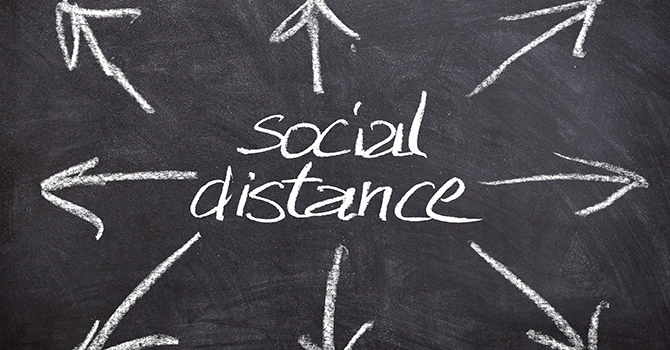Coronavirus: Is Social Distancing Working?

Q&A with David Hutton
Associate Professor of Health Management and Policy
For the past few weeks, most of us have begun social distancing, or staying at home as much as possible to avoid contracting or spreading coronavirus. Still, we are seeing the number of new cases of coronavirus increase significantly day after day. Is social distancing actually working? And when we will be able to go back to our normal day-to-day activities?
David Hutton, an associate professor of Health Management and Policy at the University of Michigan School of Public Health and an expert in mathematical modeling of diseases and pandemic planning, discusses.
What can we learn from looking at other countries about the effectiveness of social distancing to slow the spread of coronavirus?
When we look at other countries such as China, specifically the Hubei Province and Wuhan, and Italy, we see that they’ve implemented social distancing, which has been quite restrictive. Still, there is this exponential growth in the number of new cases of coronavirus after the restrictions. That’s pretty scary—and it can be confusing. You think you’re doing the right thing, staying at home for two weeks or more. But it’s hard to see the impact that it’s having. This is happening throughout the world.
The good news is that, in other countries, about after two weeks or so, it looks like the number of new cases per day does seem to be peaking, plateauing, and then declining. And there's a good epidemiological reason for that.
It takes almost a week or so before symptoms develop, and then it takes another few days for someone to go to the hospital, and then another few days for them to actually get tested and get their test results back. So there is going to be a natural lag or delay between when you implement successful interventions to reduce the spread of disease and when you see the actual number of reported cases peak or begin to drop.
So, the first few weeks of social distancing might be discouraging. But I believe that eventually we’ll see the number of new cases drop—thanks in large part to the social distancing we’ve been doing.
When the number of new cases does eventually drop, will we be able to go back to our normal activities right away?
If social distancing is effective—and I think it will be—we'll be reducing a lot of unnecessary infections and cases and flattening the curve. But if we're really effective—and hopefully we will be—only a small fraction of the population will become infected over the next couple of months. And that's a very good thing that we're reducing the number of total people infected.
But it also means that if we lift the social distancing interventions too early, we’re not going to see these good outcomes.
Let’s say on April 1, we have a football game at Michigan Stadium with one hundred thousand people attending. That’s not going to be good. Of those hundred thousand people in the stadium, 95% or more are still going to be susceptible to the virus. We won’t have achieved herd immunity and so the virus will still be able to explode in the population again.
So, once we finish this round of social distancing in the next few weeks or months, we need to be really careful as we lift our social distancing measures to make sure the virus doesn’t take hold and run out of control again.
- Learn more about Health Management and Policy at Michigan Public Health.
- Read more from Michigan Public Health experts on coronavirus.
